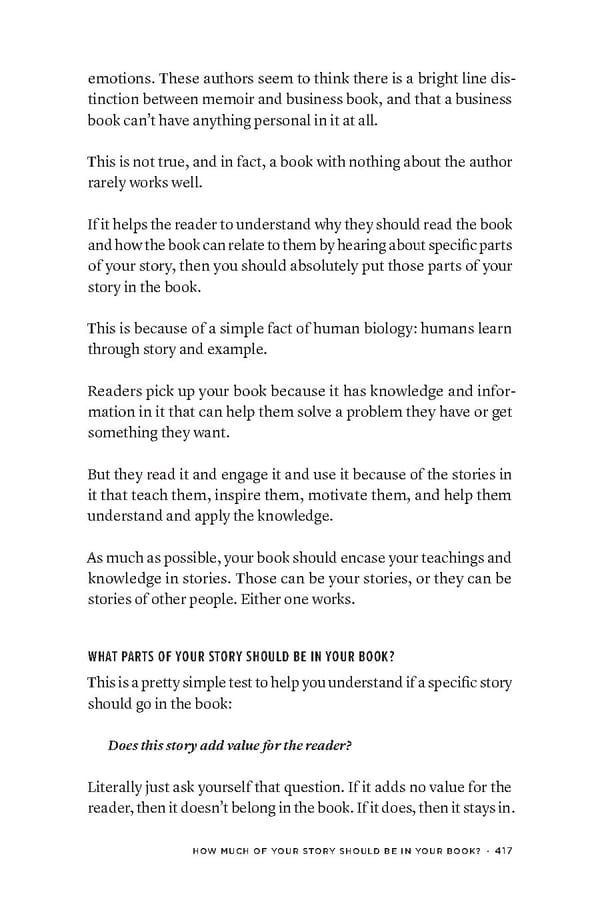emotions. These authors seem to think there is a bright line dis- tinction between memoir and business book, and that a business book can’t have anything personal in it at all. This is not true, and in fact, a book with nothing about the author rarely works well. If it helps the reader to understand why they should read the book and how the book can relate to them by hearing about specific parts of your story, then you should absolutely put those parts of your story in the book. This is because of a simple fact of human biology: humans learn through story and example. Readers pick up your book because it has knowledge and infor- mation in it that can help them solve a problem they have or get something they want. But they read it and engage it and use it because of the stories in it that teach them, inspire them, motivate them, and help them understand and apply the knowledge. As much as possible, your book should encase your teachings and knowledge in stories. Those can be your stories, or they can be stories of other people. Either one works. WHAT PARTS OF YOUR STORY SHOULD BE IN YOUR BOOK? This is a pretty simple test to help you understand if a specific story should go in the book: Does this story add value for the reader? Literally just ask yourself that question. If it adds no value for the reader, then it doesn’t belong in the book. If it does, then it stays in. hOW MUCh Of yOUr STOry ShOUlD BE iN yOUr BOOk? · 417
 The Scribe Method by Tucker Max Page 416 Page 418
The Scribe Method by Tucker Max Page 416 Page 418